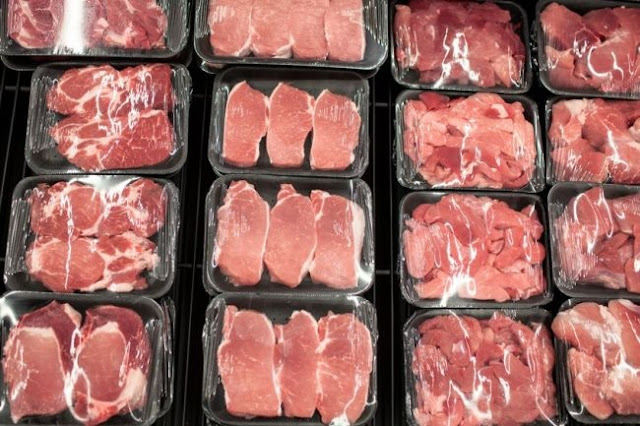Twenty years later, the coffee that people loved the most in the world will disappear.
By 2040, about 20 years later, it may be difficult to enjoy coffee as it is now. This is because climate change has endangered the most popular coffee on Earth.

In a study by the Royal Botanic Gardens and Nottingham University's Geology Department, the Biology and Chemistry Department of the University of Quinnmery, London, and the joint research team of the Ethiopian Environmental and Climate Change and Coffee Forest Forum (ECCCFF), published in the scientific journals Science Advanced and Global Change Biology, most of the world's droughts and pests that have become more frequent due to climate change, spread, and most of the world's disease.
Based on the latest computer simulations and on-site findings, the research team predicted what future 124 wild coffee tree species will face in the face of global warming and continued ecosystem destruction. The results showed that about 75 species were exposed to extinction. Of the total, 35 are growing left unattended without special preservation and protection measures. According to the biodiversity risk measure developed by the International Union for Conservation of Nature (IUCN), 13 species face serious risks, while 40 species including Arabica were classified as endangered and 22 others as vulnerable.
If the current climate change continues, the coffee consumption environment is on the verge of drastic changes as early as 10 to 20 years.
The joint research team concluded that by 2038, coffee production would be reduced by 40 to 50 percent from the present and that by 2040, 21 years later, the arabica robusta coffee species would be virtually extinct or almost impossible to find. It also analyzed that by 2088 40 percent of all coffee species will disappear and 80 percent will disappear according to some analysis models.
Arabica coffee has emerged as one of the world's most beloved coffee varieties due to its rich fragrance of flowers compared to Robusta and the harmony between sour and sweet. It is a breed that currently accounts for 60-70 percent of the global coffee market, produced in most countries of coffee belts. It ranges from Central and South America, such as Brazil, Colombia, and Peru, as well as Southeast Asia, such as Genya, East Africa, and Indonesia. In the case of arabica wild species, however, they are only growing in Ethiopia and South Sudan, Africa's largest coffee exporter. Arabica species are particularly vulnerable to pests, and the spread of pests caused by climate change is feared to be the "worst disaster" that causes species annihilation.
Alan Davis, a researcher at the Royal Botanical Garden, pointed out, "Currently, the coffee varieties we drink are too biased to be free from the threat of climate change. In order to secure variety and maintain coffee as favorite food, we need to secure, grow and analyze various coffee species."


In a study by the Royal Botanic Gardens and Nottingham University's Geology Department, the Biology and Chemistry Department of the University of Quinnmery, London, and the joint research team of the Ethiopian Environmental and Climate Change and Coffee Forest Forum (ECCCFF), published in the scientific journals Science Advanced and Global Change Biology, most of the world's droughts and pests that have become more frequent due to climate change, spread, and most of the world's disease.
Based on the latest computer simulations and on-site findings, the research team predicted what future 124 wild coffee tree species will face in the face of global warming and continued ecosystem destruction. The results showed that about 75 species were exposed to extinction. Of the total, 35 are growing left unattended without special preservation and protection measures. According to the biodiversity risk measure developed by the International Union for Conservation of Nature (IUCN), 13 species face serious risks, while 40 species including Arabica were classified as endangered and 22 others as vulnerable.
If the current climate change continues, the coffee consumption environment is on the verge of drastic changes as early as 10 to 20 years.
The joint research team concluded that by 2038, coffee production would be reduced by 40 to 50 percent from the present and that by 2040, 21 years later, the arabica robusta coffee species would be virtually extinct or almost impossible to find. It also analyzed that by 2088 40 percent of all coffee species will disappear and 80 percent will disappear according to some analysis models.
Arabica coffee has emerged as one of the world's most beloved coffee varieties due to its rich fragrance of flowers compared to Robusta and the harmony between sour and sweet. It is a breed that currently accounts for 60-70 percent of the global coffee market, produced in most countries of coffee belts. It ranges from Central and South America, such as Brazil, Colombia, and Peru, as well as Southeast Asia, such as Genya, East Africa, and Indonesia. In the case of arabica wild species, however, they are only growing in Ethiopia and South Sudan, Africa's largest coffee exporter. Arabica species are particularly vulnerable to pests, and the spread of pests caused by climate change is feared to be the "worst disaster" that causes species annihilation.
Alan Davis, a researcher at the Royal Botanical Garden, pointed out, "Currently, the coffee varieties we drink are too biased to be free from the threat of climate change. In order to secure variety and maintain coffee as favorite food, we need to secure, grow and analyze various coffee species."




Comments
Post a Comment